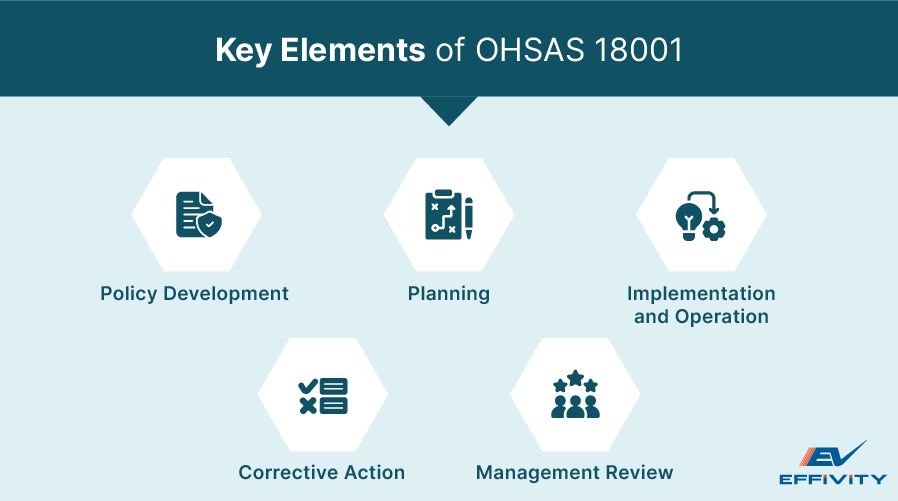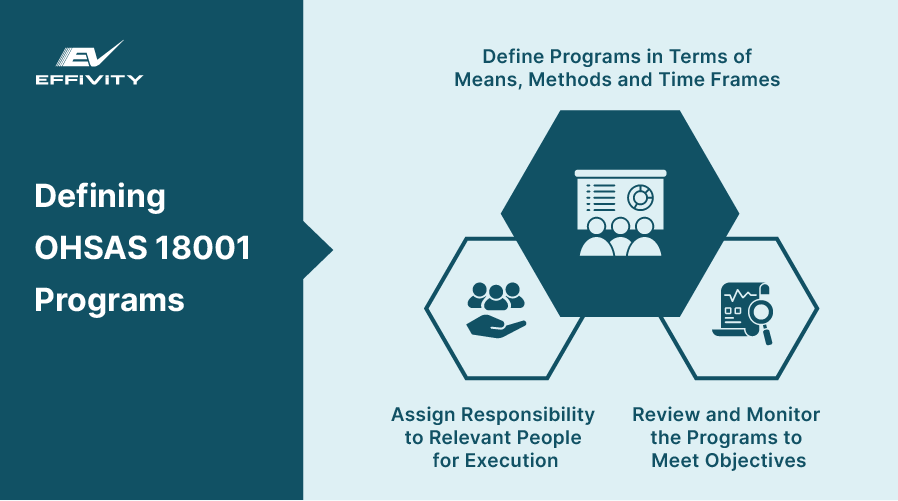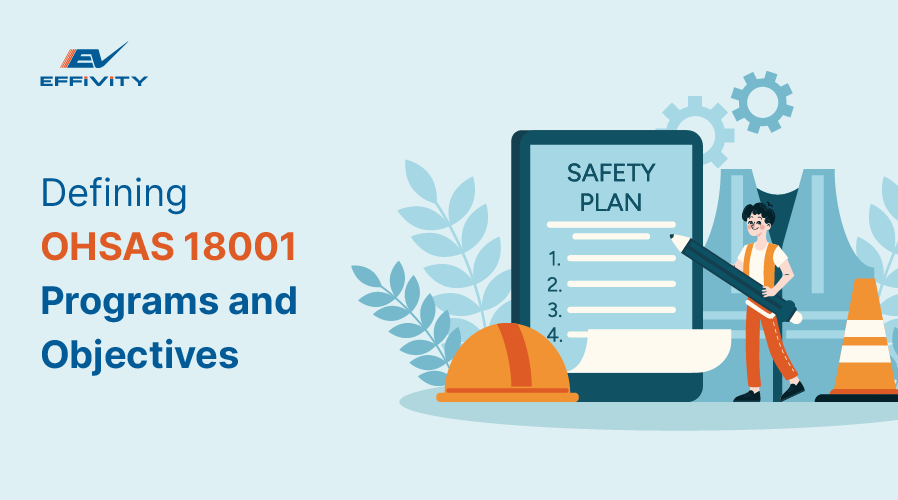A commitment to workplace health and safety is what plays a huge role towards a business's success today. As it should be, considering the UN Global Compact has reported that an estimated 2.78 million workers are fatally injured, while 374 million workers face non-fatal injury due to workplace accidents each year.
Given how employees are the assets of any business, prioritizing their safety through workplace safety programs through effective occupational health and safety management software is a must.
Any organization looking to achieve workplace safety compliance through a successful OHSAS 18001 system must set health and safety objectives and design programs to meet these objectives.
In this article, we'll determine the various ISO 45001 objectives and programs to be set within an organization to achieve compliance.
Understanding OHSAS 18001
OHSAS 18001 offers a framework to help organizations plan, implement, and manage their occupational health and safety management systems. The standard requires organizations to develop an OHSAS that integrates health and safety into their overall management processes and helps achieve business objectives. Key elements include:

-
Policy Development:
The standard requires businesses to establish a clear occupational health and safety policy that demonstrates the organization's commitment to safety. It should set the overall goals to meet the scope of the OHSAS system. -
Planning:
Planning involves identifying hazards, assessing risks, and determining necessary controls. This stage also includes identifying legal requirements and objectives for improvement to ensure better employee safety. -
Implementation and Operation:
This requirement includes the assignment of roles, responsibilities, and resources to achieve the OHSAS objectives and targets. The organization needs to ensure proper training, awareness of the need for OHSAS, and procedures for documentation control to enhance consistency within the system. -
Corrective Action:
The OHSAS processes must be followed by monitoring and measurement of performance against safety policies and objectives. Any non-conformities must be investigated, and corrective actions should be implemented to ensure workplace safety compliance. -
Management Review:
Finally, the OHSAS 18001 requires regular reviews by top management to ensure the continuing suitability, adequacy, and effectiveness of the OHSMS.
OHSAS 18001 vs OHSAS 45001
Both OHSAS 18001 and OHSAS 45001 are widely used occupational health and safety management systems worldwide that guide organizations in managing occupational risks and creating a safer workplace environment for their employees.
While OHSAS 18001 was introduced in 1999, OHSAS 45001 is more recent – introduced in 2018 – and has a broader scope in terms of implementation and management. ISO 45001 is more aligned with other international standards, such as ISO 9001 and ISO 14001.
In addition, for OHSAS 18001 to ISO 45001 migration, organizations need to fulfil requirements for leadership and work participation and put a stronger focus on illness and accident prevention, all as per ISO 45001 objectives.
While ISO 45001 is more comprehensive than ISO 18001, the core concepts and structure for both standards remain the same.
OHSAS 18001 Objectives
Within ISO 18001, organizations are required to define and establish measurable and documented OHSAS objectives for different business functions.
Like any other business goals, objectives under OHSAS 18001 should be Specific, Measurable, Achievable, Relevant, and Time-bound (SMART) while also being consistent with your occupational health policy. The policy, stating the goals of the OHSAS to remove or reduce occupational risks, along with the SMART objectives, will provide a clear direction for improvement and performance measurement.
Here are a few things organizations must consider while defining objectives-
1. Stakeholders
You must consider the needs and goals of the internal and external stakeholders while defining ISO 45001 objectives. These stakeholders may include shareholders, employees, customers, suppliers, local residents, and more.
2. Legal Obligation
You must align your OHSAS and business objectives with the existing legal requirements of the health and safety management system to minimize workplace accidents and injuries. Moreover, all these regulatory requirements must be recorded, monitored, and updated in a timely manner to define the objectives accordingly.
3. Business, operational, financial, and technological requirements
The occupational health and safety compliance requirements will be unique to every company. So, it is important to identify the specific operational needs, financial resources, infrastructure, and technological requirements of your business to define the objectives and programs accordingly.
Once you have identified the above requirements, you can start defining your ISO 45001 OHSAS objectives. While these are different for every organization, some common objectives could include identifying-
- Yearly average number of absent days for employees
- Number of internal and external non-conformances
- Number of OHSAS risk assessments undertaken in the year
- Number of man hours worked since the last incident
- Results of employee OHSAS satisfaction survey
While some of these objectives simply measure performance and compare this to the intended objectives, others help you take a proactive approach with more risk assessments or audits.
OHSAS 18001 Programs
While the OHSAS 18001 standard does not state what programs you can carry out, it does define certain components that your workplace safety programs must include. These are-

- The programs must be defined in terms of means, methods, and time frames.
- The organization must assign responsibility to people at relevant levels of the organization for the execution of the programs.
- The programs must be followed by timely reviews to monitor the progress, identify gaps, and make adjustments if needed. This can ensure that the OHSAS objectives are met efficiently.
In essence, organizations must define the responsibilities, method, and timeline for the execution of programs so that they deliver the outcomes they're aiming to achieve. Most of all, it is important that your programs are measurable so that you can review and monitor the results and stay on track with workplace safety compliance.
In the End
With an OHSAS system, it is imperative to take a proactive approach when defining your objectives and programs, as unlike other management systems, there is no redo. If your programs fail, this could have a negative effect on employee health and safety and hurt your business credibility.
For organizations striving to create safer workplaces, the principles and practices of OHSAS 18001 remain essential tools in achieving these goals and must be implemented effectively.






























